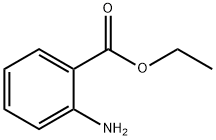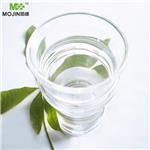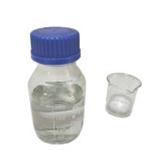Chemical Properties
colourless liquid
Chemical Properties
Ethyl anthranilate has a faint, orange-flower odor and similar taste.
Occurrence
Reported found in grapes, orange juice, orange peel oil, starfruit and Vitis labrusca L.
Uses
Ethyl 2-aminobenzoate is used as a reactant in the amination of aryl chlorides, bromides, and triflates.
Uses
Perfumery and flavors, similar to methyl
anthranilate.
Preparation
By esterification of anthranilic acid with ethanol in the presence of acid catalysts; by reacting sodium hypochlorite with
an alkaline solution of phthalimide
Definition
ChEBI: Ethyl 2-aminobenzoate is a benzoate ester.
General Description
Colorless liquid with a fruity odor. Insoluble in water.
Air & Water Reactions
ETHYL ANTHRANILATE should be protected from air and light. Insoluble in water.
Reactivity Profile
ETHYL ANTHRANILATE may hydrolyze under acidic and basic conditions.
Fire Hazard
Flash point data for ETHYL ANTHRANILATE are not available. ETHYL ANTHRANILATE is probably combustible.
Pharmacology
Ethyl anthranilate behaved as a local anaesthetic, as measured by depression of
muscle twitch, but was 50% less effective than the m- and p-aminobenzoate isomers. All three compounds
potentiated the initial phase of caffeine-induced contracture of frog sartorius muscle, but
the o-isomer had no effect on the peak tension of the contracture (Friedman, Bianchi & Weiss.
1974). It was proposed that the o-amino group has both steric and polar effects, its bulk preventing
the inhibitory action of the carbonyl group on the caffeine-induced contracture of sartorius muscle,
while the lone electron pair of the nitrogen atom induces a contracture on its own accord and
potentiates a caffeine-induced contracture (Friedman, 1975).
Ethyl anthranilate (0-1 mmol/litre) decreased the frequency of the electric-organ discharges of
the electric fish, Gnathonemus moori, but did not affect the individual pulse amplitudes, indicating
that the compound acted on the pacemaker cells of the mesencephalic command nucleus (Walsh
& Schopp, 1966).
Safety Profile
Moderately toxic by
ingestion. A skin irritant. Combustible
liquid. When heated to decomposition it
emits toxic fumes of NOx.




